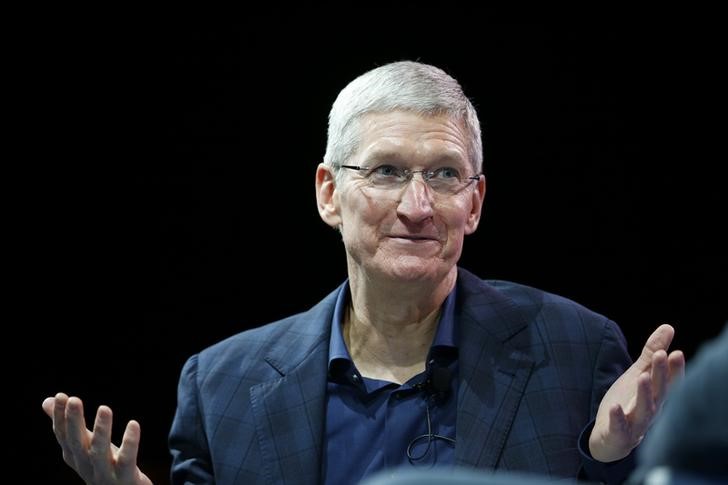Investing.com -- U.S. stocks surged at the start of the new week, with the Dow Jones rising nearly 300 points as the federal government signaled more soft-pedaling on the trade war with China for the time being.
The Commerce Department said it will extend for another 90 days the “temporary and limited” exemptions for U.S. companies doing business with Chinese telecoms giant Huawei, citing the need to avoid disruption to local U.S. phone services.
“As we continue to urge consumers to transition away from Huawei’s products, we recognize that more time is necessary to prevent any disruption,” Secretary of Commerce Wilbur Ross said in a statement.
The news helped push fears of an imminent recession back to the back burner, recouping more of last week’s losses.
By 9:45 AM ET, the Dow was up 283 points or 1.1% at 26,169 points, while the S&P 500 was up 34 points, a gain of 1.2%, and the Nasdaq Composite was up 115 points, or 1.5%.
Apple (NASDAQ:AAPL) led the market higher with a 2.8% rise, boosted by hints from President Donald Trump that he could tweak his proposed sanctions on China, where Apple makes its iPhones, so as to shore up its competitive position vis-à-vis Samsung (KS:005930).
Chipmakers Nvidia (NASDAQ:NVDA), Advanced Micro Devices (NASDAQ:AMD) and Qualcomm (NASDAQ:QCOM) – all of them sensitive to trade-related concerns - also outperformed.
Another big gainer was Estee Lauder (NYSE:EL), which rose 9.1% after reporting underlying earnings 20% ahead of consensus and forecasting a much stronger end to its fiscal year than analysts expected, thanks to buoyant demand for premium skin care products, especially in Asia.
The return of risk appetite to stocks also helped to unwind the ugly-looking technicals of the bond market, which had provoked such unease among investors last week. The yield on the 10-year U.S. Treasury note touched 1.62%, its highest since Wednesday, and nine basis points above the benchmark two-year note.
That gave analysts more confidence to downplay the inversion of two- and 10-year yields last week. While every recession in recent times has been preceded by such a pattern, not every inversion has led to a recession.
“The curve inversion might be more an indicator of extreme market nervousness at present, of increasing central banks action, skewed bond ownership, and of global search for yield, rather than a sure sign that the U.S. is about to enter a recession,” JPMorgan Chase (NYSE:JPM) analysts led by Mislav Matejka wrote in a note to clients.
Elsewhere, U.S. crude oil futures traded briefly above $56 for the first time since Wednesday before retreating to $55.72, up 1.6% on the day. Gold futures went in the opposite direction, losing 1.1% to $1506.09 a troy ounce.
